The eggs of Aglia japonica microtau are brown, shiny, and slightly flattened, resembling beans.
Aglia japonica microtau (wingspan 2.5-3 inches/52-75mm) flies in Japan
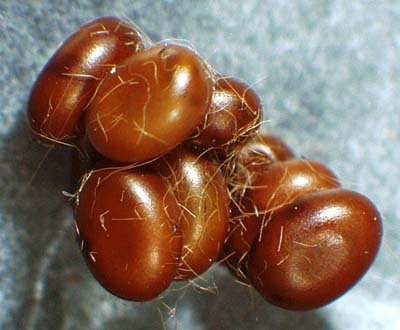
The eggs of Aglia japonica microtau are brown, shiny, and slightly flattened, resembling beans.Aglia japonica microtau (wingspan 2.5-3 inches/52-75mm) flies in Japan |  |
This day old larva is well adorned with armaments to protect it from would-be-predators.Larvae tend to be solitary and do not move around much even in later instars. |
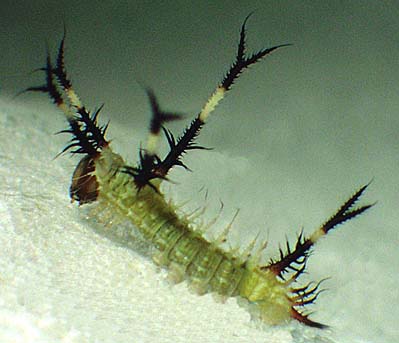 |
This dorsal view and other images courtesy of Hideshi Naka in Japan. These larvae definitely do not like crowding.Rearing in cramped artificial quarters would likely prove disastrous. |
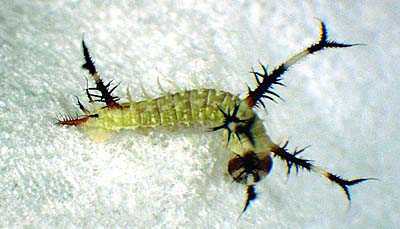 |
After just a few days of feeding larvae progress to the second instar.Body girth has increased considerably relative to the size of the head, now green. | 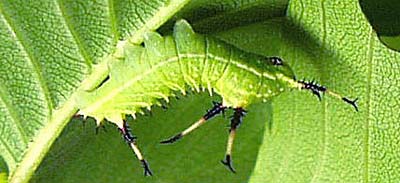 |
This dorsal view shows what a predator might see from the ground or lower branches. | 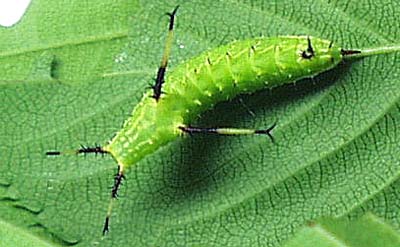 |
Larvae tend to be quite sedentary and grow rapidly. This third instar larva has been out of the eggshell for less than two weeks.The lateral line is almost the same colour and width as leaf veins. | 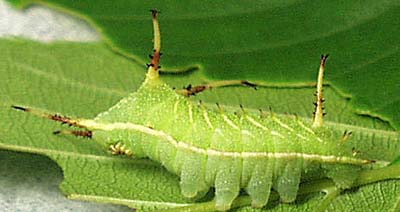 |
Colour of the "munched off" central vein tip is same as reddish brown tips of spines which project from the head at almost the same angle as that of secondary veins from central vein.All images on this page are courtesy of Hideshi Naka of Japan. | 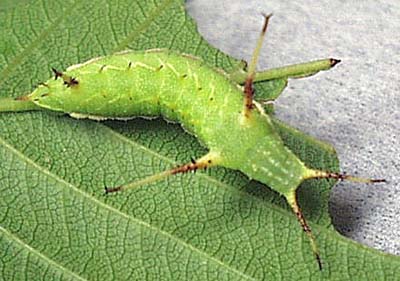 |
I believe this active process takes precedence over "survival of fittest" transmission of desired traits, and that there may well be a creative "intelligence" that allows for developments of organs, appendages, stages etc., beyond what can be processed from the environment by the senses
"Horns" are still quite long in the fourth instar.
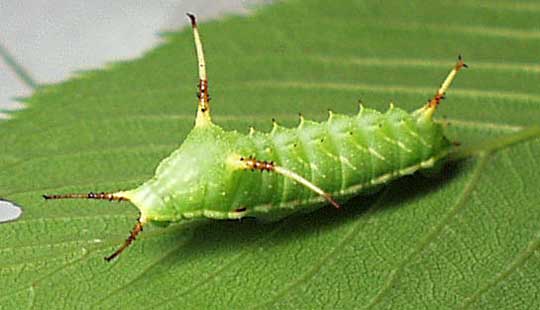
The images below, from May 22, show variability in horn length. All larvae are in the fifth instar and horns are greatly diminished.
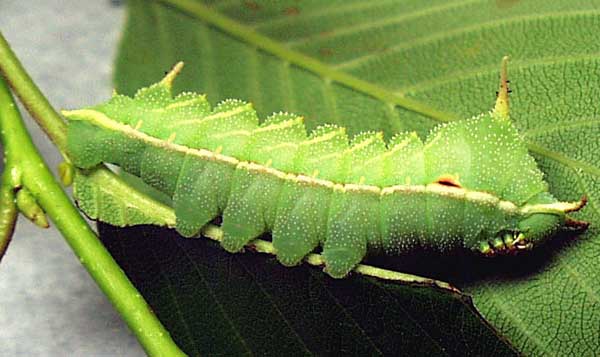
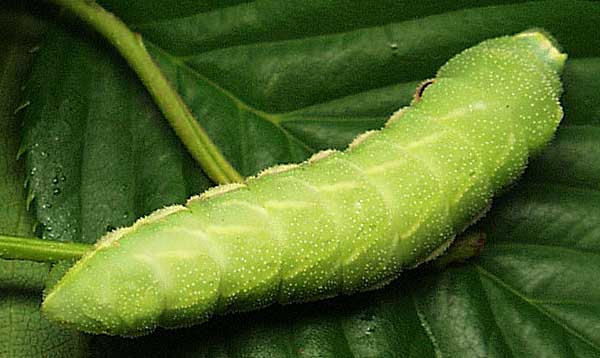
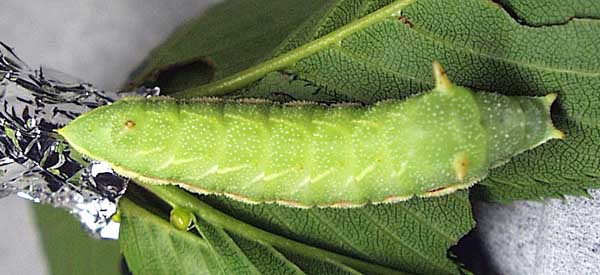
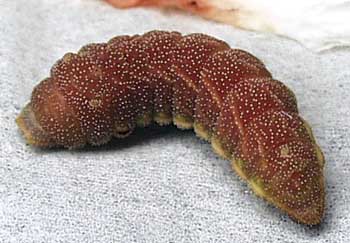 | 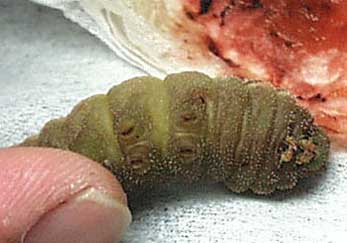
|
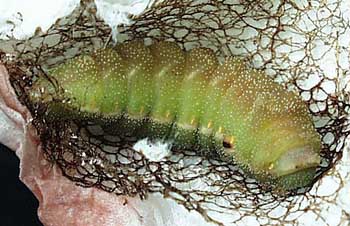 | 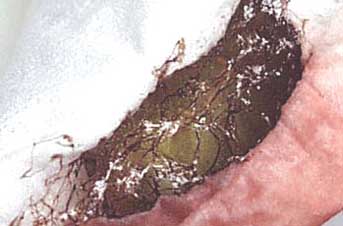 |
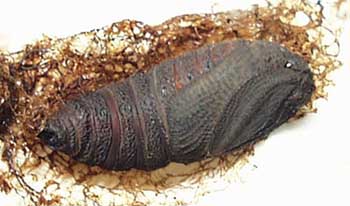 | 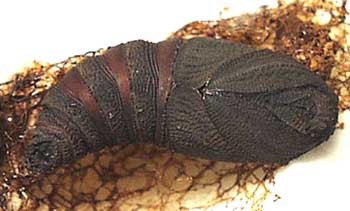 |
Return to Main Index